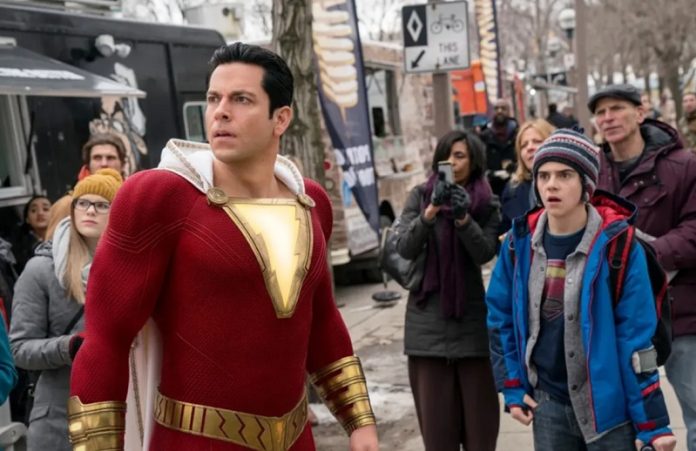
For more than a decade, superhero movies have dominated the world of entertainment.
For Hollywood, they’ve been a constant in an ever-changing media landscape, an almost guaranteed way to bring in hundreds of millions of dollars at the box office, while leaving fans ready for the next (and the next and the next) effects laden spectacle.
But over the last few months, a string of superhero movies that have failed to deliver with critics and audiences has created a haze over Hollywood and left many wondering: Is this the death of the superhero movie?
Marvel’s “Ant-Man and the Wasp: Quantumania,” billed as the introduction of the Marvel Cinematic Universe’s new big bad, Kang, was a relative box office disappointment and failed to hit home with critics.
Its worldwide box office gross sits at $463.8 million, below both previous Ant-Man films, despite its more significant place in the ongoing MCU story.
And DC has been faring even worse. Last October, “Black Adam” failed to change the “hierarchy of power,” as its star and hype man Dwayne Johnson anticipated and might end up losing Warner Bros. millions of dollars.
Last weekend, “Shazam! Fury of the Gods” hit theaters with a thud, pulling in only $30.5 million, below its $53.5 million opening weekend projection. Even in an industry recovering from the COVID-19 pandemic and changing theatrical viewing habits, that’s low.
Are these movies outliers in a genre that still holds sway with audiences or is this really the beginning of the end for superhero films?
Ryan Faughnder, senior editor of the Los Angeles Times’ Company Team, which covers the entertainment business, isn’t ready to say the genre is dying. But he does see clear signs of “superhero fatigue.”
The number of Marvel and DC movies and television series has increased significantly over the last few years, as both Disney and Warner Bros. have jumped headfirst into the streaming wars with Disney Plus and HBO Max.
The MCU alone now includes more than 30 films and eight TV shows. The glut of content has resulted in what Faughnder says is a quality control issue.
“It’s not that there are too many superhero movies–– it’s that there are too many bad superhero movies and bad movies in general,” Faughnder says.
“Audiences are smarter than they get credit for, and if studios keep churning out mediocre material just to feed the beast, that’s going to be limiting for creativity and, ultimately, will probably hurt business.”
The recent barrage of Marvel shows on Disney Plus has also started to turn Marvel’s greatest strength––that it’s an ongoing, interconnected universe––into a potential liability, says Steve Granelli, an associate teaching professor of communication studies at Northeastern University who specializes in pop culture and fandom.
“You can’t rely on the audience to have watched four different series that are between eight and 10 episodes apiece before they’re ready to watch your movie,” Granelli says. “They put you in a position where you have to learn everything all the time, and I think that leads to fatigue.”
The longer these franchises go on and the more attachment audiences have to longstanding heroes, the harder it becomes for familiar yet less popular heroes like Ant-Man and Shazam and new heroes like Black Adam to anchor a hundred million dollar blockbuster.
Suddenly, the kinds of niche heroes that could fill out a super team, like Marvel’s Guardians of the Galaxy, aren’t a guaranteed success, Granelli says.
“I don’t think this would happen with another Spider-Man movie,” Granelli says.
“If there was, all of a sudden, another Captain America movie and Chris Evans came back, I don’t think there would be this level of fatigue. … It’s more about characters and story as opposed to what we perceive to be these insignificant pieces in a larger story that we either don’t understand or don’t care about.”
It’s not just audiences who are starting to feel burnt out. Visual effects and post-production workers are struggling to keep up with the constant churn of more effects-heavy content, leading to a VFX crisis industrywide.
For the last decade, superhero movies have been a constant for the studios. Marvel and DC set release dates for untitled superhero movies years in advance. Stockholders could rest easy knowing there was a box office success on the horizon, and fans could get hyped about the next chapter in their favorite story.
But the assembly line approach has been stretched to its limits recently, and it’s hurting workers, the quality of films and the studios’ bottom lines. Faughnder says audiences aren’t the only ones realizing this––executives are too.
In March, Disney CEO Bob Iger said that his company would pump the brakes on its Marvel output. He said Disney would start to look at quality, not just quantity, when it comes to its biggest franchises like Marvel, something the company did with Star Wars a few years ago.
Meanwhile, DC brought on director James Gunn and producer Peter Safran to hit the reset button on DC’s extended universe with a new vision for the franchise. In explaining his vision to journalists in January, Gunn was relatively candid about what he saw as the genre’s pitfalls.
“Superhero fatigue can be real once the movies start to get repetitive and too much like each other,” Gunn said.
The “Guardians of the Galaxy” director was clear that in order to keep audiences invested, the genre can’t just rely on the same “good guy, bad guy, giant thing in the sky” formula that fans have become accustomed to over the last decade.
He also acknowledged the need for more flexible release dates and a more screenwriter-friendly approach to big budget filmmaking. It’s yet to be seen if those changes will be enough for studios to course correct and get audiences back onboard.
Whether warranted or not, the anxiety around the death of superhero films has proven how much the entertainment industry relies on the likes of Marvel and DC for its survival.
“They found a formula that worked and are now terrified of that formula not working anymore,” Granelli says. “Coming up with a whole new thing and figuring out what works is probably the most terrifying thing in Hollywood.”
But if superhero fatigue continues, along with diminishing returns on what has been a decade-long stable cash cow, what will studios turn to? The industry is in a position where it both needs new stories or franchises but is more risk averse than ever because of its reliance on a steady stream of reliably successful superhero films.
“They can’t abandon the franchise model––it’s not going to work––but they definitely need to take more shots at more original IP if there’s going to be a sustainable, relevant film business,” Faughnder says.
New stories are always a risk, despite a clear desire for fresh ideas as in the case of “Everything Everywhere All at Once.”
And franchises are clearly going nowhere: The 2022 U.S. domestic box office was made up entirely of sequels and spinoffs. But the recent success of several mid-budget franchise (“Scream 6” and “Creed 3”) and non-franchise (“Cocaine Bear”) films also points to a potential path forward for the risk-averse studio system.
“They need more of these new franchises to keep going because a lot of these older franchises are starting to wane, which is just kind of a natural cycle of the business,” Faughnder says.
Written by Cody Mello-Klein.



